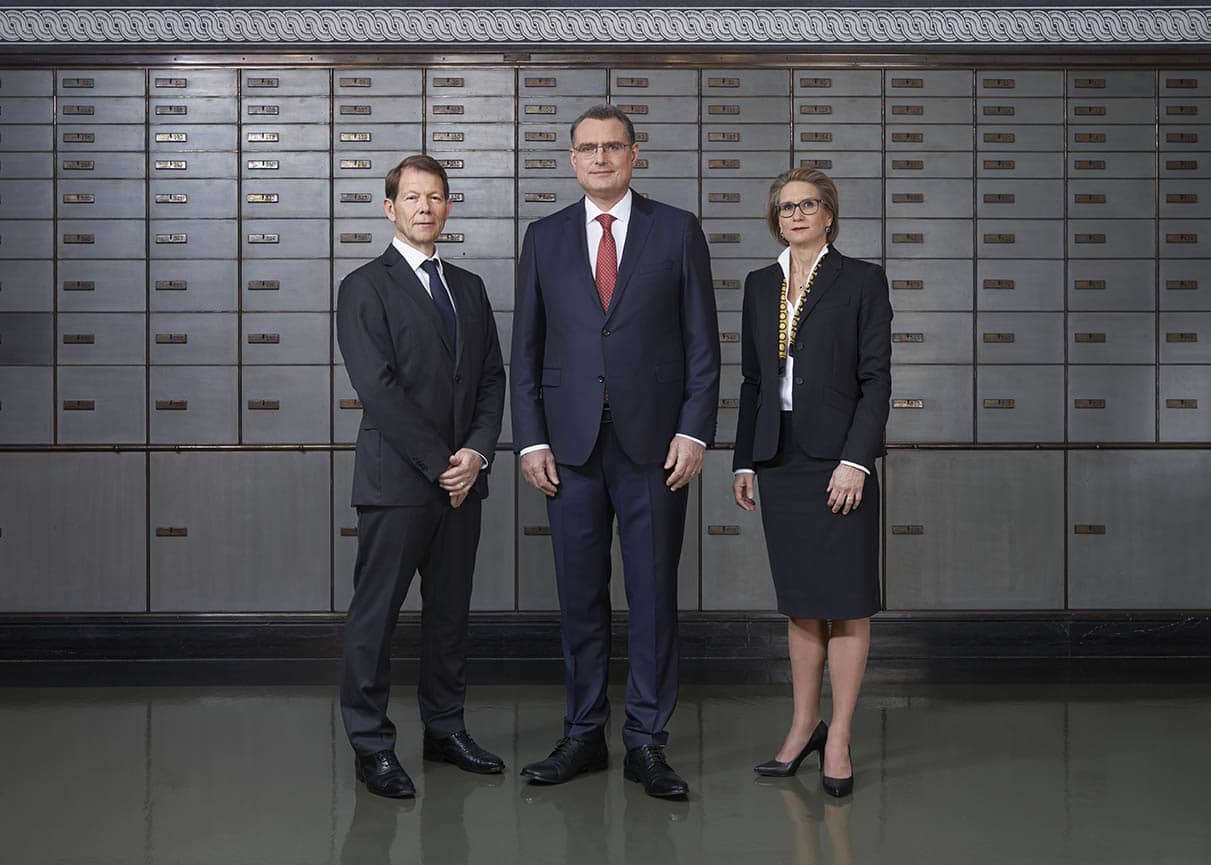Swiss Franc at Risk from U.S., EU Bond Yields as ECB and Fed Policies Shift
- Written by: James Skinner
-
- Tectonic shift in interest rate landscape poses risk to CHF
- Pitting bond yield differentials against safe-haven demand
- As ECB signals end of an era, Fed confronts U.S. inflation

Image © SNB / D. Büttner
Switzerland’s Franc has risen against the Euro and many other European counterparts thus far in 2022 but with the tectonic plates of the global interest rate landscape shifting steadily, it may find itself at growing risk of a depreciation against a range of currencies as the year goes on.
The Swiss Franc has long been popular among investors as a harbour of safety and store of value to moor up in during times of financial market turbulence and that could be one reason why it’s performed strongly against many regional counterparts so far this year.
But there is potentially a tectonic shift in Eurozone and European Central Bank (ECB) monetary policy entering the pipeline, which could have implications for the Euro and Swiss Franc in the near future.
Even more so if an eventual settlement or other kind of end to the war in the Ukraine and resulting ebb of demand for safe-haven assets coincides with steps by the ECB and Federal Reserve (Fed) to normalise the settings of their monetary policies.
“The CHF advance came to a halt yesterday, as EUR/CHF tentatively retraced to 1.02. The extended rally in long-dated core yields could have acted as a reminder that Switzerland is set to remain at bay of the broad monetary tightening trend,” says Alexandre Dolci, a strategist at Credit Agricole CIB.
U.S. government bond yields and the increasingly hawkish Federal Reserve have been the focus of much market attention of late but equally important for the Swiss Franc outlook is the ECB’s continuing signals that it too may not be all that far off from a landmark shift in monetary policy.
Those signals continued on Thursday when minutes of the ECB’s March monetary policy meeting confirmed that, for the time being at least, the bank has all but secured a sustainable medium-term attainment of its long elusive two percent annual inflation target.
“Taken together, the improvement in the labour market and the re-anchoring of inflation expectations made it increasingly likely that inflation would stabilise around the 2% target over the medium term,” the minutes read in one part.
“More than ever there was a need to maintain optionality in the conduct of monetary policy. In the current conditions, it was especially important for monetary policy to remain data-dependent and for optionality to be two-sided,” the meeting record states in another part.
To the extent that the ECB remains on course to deliver that target at the other end of its forecast horizon, over the forthcoming meetings, it could potentially signal the end of an era for European monetary policy by heralding an eventual uplift in the bank’s interest rates.
“Looking ahead, we still think that the ECB will make a clear distinction between policy normalisation and monetary policy tightening. Normalisation would include an end to net asset purchases and bringing the deposit rate back to zero. Tightening would be the start of a longer rate hike cycle, bringing rates close to, or even above, neutral levels (wherever these levels might be),” says Carsten Brzeski, global head of macro at ING.
“Normalisation seems to be acceptable for both hawks and doves; there are only different views regarding the timing. Tightening is definitely not yet an option for the doves, nor for all hawks. Next week’s meeting is not one for actual policy action,” Brzeski also said on Thursday.
The European Central Bank ended its near-€2 trillion Pandemic Emergency Purchase Programme (PEPP) last month and announced at the March meeting that a temporary increase in the size of Frankfurt’s original Asset Purchase Programme (APP) would be scaled back faster than previously planned.
Above: EUR/CHF shown at monthly intervals alongside spread - or gap - between German and Swiss 02-year government bond yields. Click image for closer inspection.
While the ECB hasn’t actually committed to any kind of “normalisation” at all, the bank has manoeuvred itself into a position where its practice of quantitative easing could be ended at any point after June this year, and that would bring the end of an era one step closer.
With a nine month long 2019 hiatus aside, quantitative easing has exerted a constant downward pressure on Eurozone government bond yields since the earliest months of 2015, reinforcing the economically stimulative impact of ECB interest rates that have been at zero or below for even longer.
Those factors have placed an almost constant and continuous downward pressure on the EUR/CHF exchange rate during recent years but would be likely to go into reverse with - if not ahead of - any eventual decision by the ECB to end its QE programme and begin lifting its interest rates.
Any such reversal could potentially be amplified by the long established stance of Swiss National Bank (SNB) monetary policy, which maintains the lowest and most negative interest rate in the world in addition to a continuing commitment to using interventions in the currency market in order to prevent the Franc from strengthening further against the Euro and other currencies wherever and whenever it is deemed to have moved too far.
“In so doing, it takes the overall currency situation and the inflation rate differential with other countries into consideration. The Swiss franc remains highly valued,” the Swiss National Bank said in its March policy statement.

